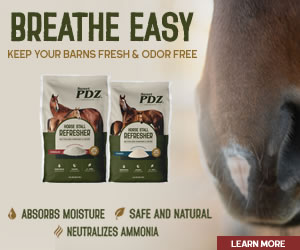A short, stilted or lame walk, increased hoof temperature, bounding digital pulse, shifting weight from foot to foot, difficulty turning, and even a reluctance to walk…these can all be signs of a laminitis episode in your horse.
While many horse owners and caregivers think of laminitis as a spring equine issue due to the horse’s over consumption of lush, spring grass with high sugar content, laminitis can be just as prevalent in the fall.
Fall laminitis can be precipitated by several different factors: changes in grass growth, seasonal rises in hormones as the days become shorter, changes in feeding, or reduced exercise as we close out summer. As we begin longing for autumn here in the mid-south, horse owners and caregivers must pay careful attention to their horses as it pertains to their feeding and grazing patterns.
As mentioned in the “Late Summer and Early Fall Pasture Management” article, when the air gets cooler and the leaves start changing, so does your pasture. The sugar content rises as new grass growth occurs due to the cooler temperatures and rain autumn typically brings. Ingesting large amounts of these sugars increases the risk of a laminitic episode in your horse.
David Gitchell, local farrier and quarter horse breeder out of Ripley, Tenn., says he really doesn’t see too much laminitis in his clients’ horses in the fall, but it is known to happen after a long, hot, dry summer followed by early autumn rainfall. A hard, early freeze or periods of cool nights and warm, sunny days can also precipitate laminitis- especially in those horses who are susceptible to it. In fact, susceptible horses should have limited grazing; consider decreasing turnout time or keeping them on a dry lot. For extremely sensitive horses, there really is no safe time to graze, and these horses should be kept on a dry lot while the sugar content in the grass is high in early fall.
Since preventing laminitis and subsequent founder is much easier than managing it after it occurs, horse owners and caregivers should watch their pastures closely as summer ends. If you suddenly notice greener grass in your field this fall, consider implementing strip grazing or using a grazing muzzle to decrease your horse’s intake if needed, in addition to utilizing a dry lot. Strip grazing can easily be achieved by simply using electric tape fencing to limit your horse’s access to the full pasture. Grazing muzzles allow the passing of only a few blades of grass at a time, therefore, restricting intake. Limited consumption during fall pasture regrowth is the best way to keep your horse from experiencing fall laminitis.
Whether your horse is susceptible to laminitis or not, you should regularly check and examine the following this fall. First, give thought to your horse’s body weight. Using a weight tape once a month throughout the fall will tell you if your horse is gaining weight as a result of greener pastures. Next, keep an eye on the horse’s hooves. Hooves should be cool to the touch, unless the horse has been running, ridden, or standing in the sun. Hot hooves in a horse at rest are indicative of laminitis.
While feeling for the hoof temperature, check the horse’s digital pulse as well. Do this by feeling the digital artery between the fetlock and coronet band. A bounding digital pulse can also be a sign of laminitis. Finally, watch your horse’s movement in the pasture. If you notice your horse lying down more than usual, sitting back and down in its heels, or even walking delicately, these could all be indicators of laminitis and warrant a call to your veterinarian immediately.










